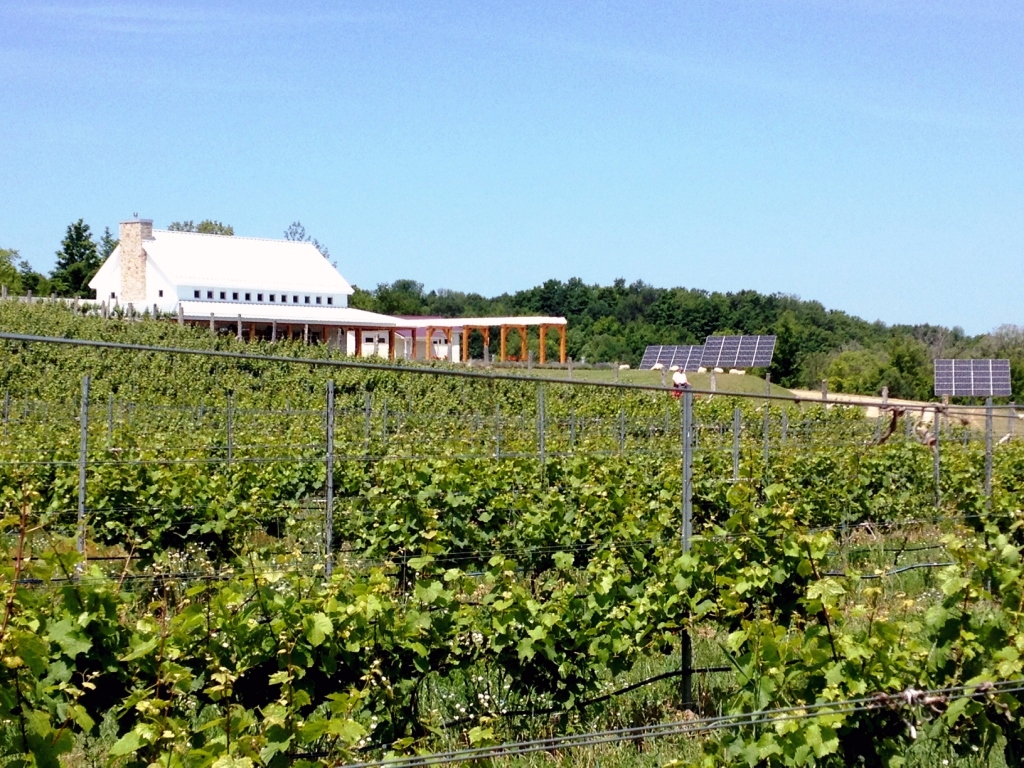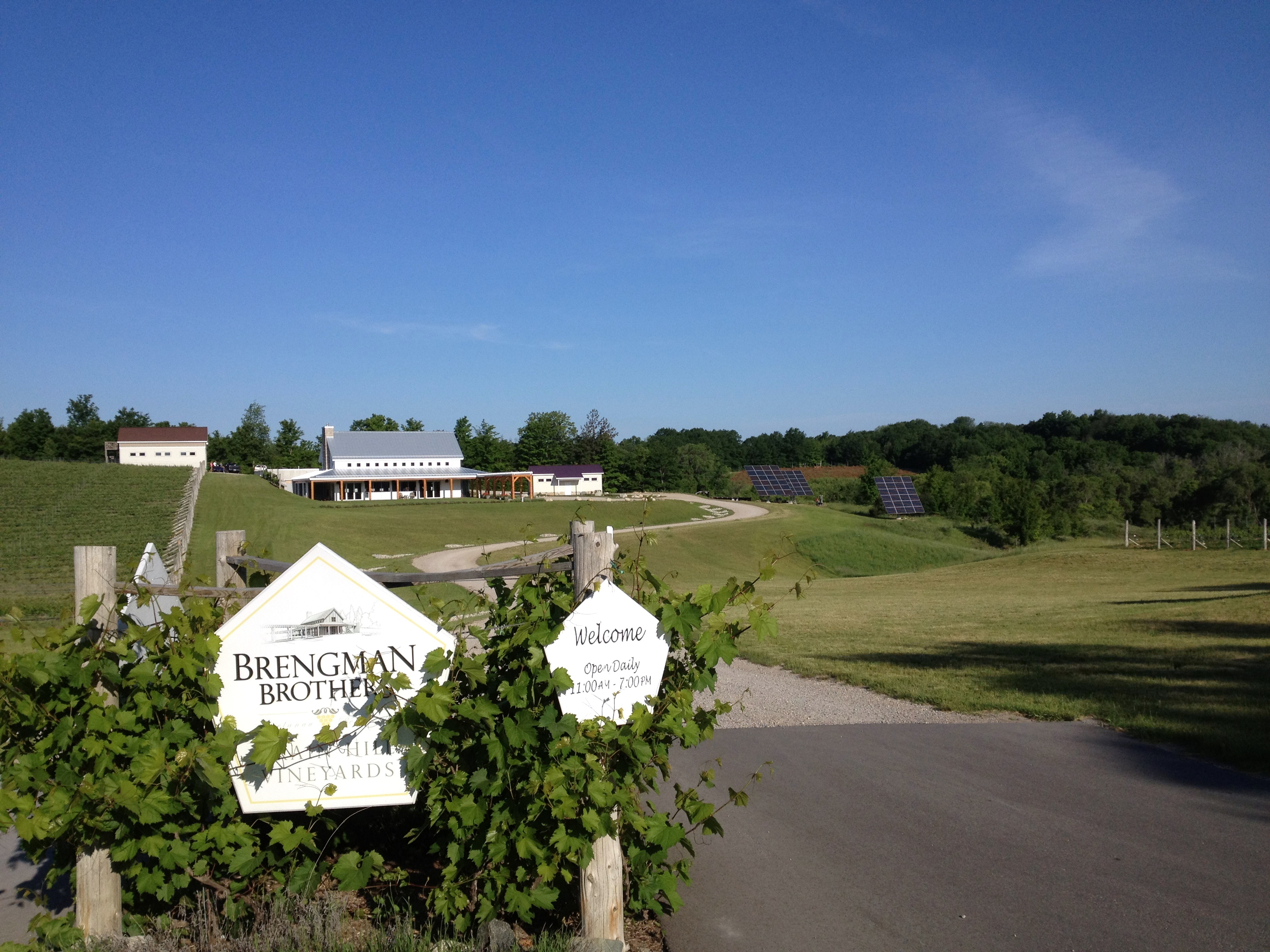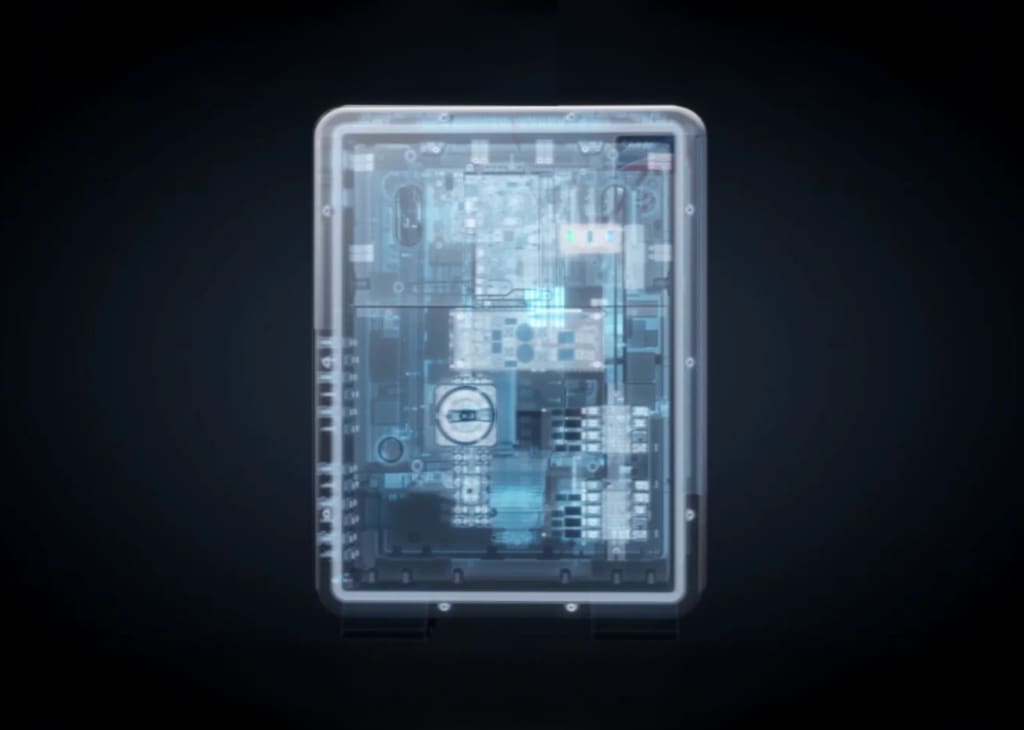One year later – Michigan’s first net-zero winery

One year ago, Michigan gained its first net-zero winery when the Brengman Brothers Crain Hill Vineyards commissioned its 18.7 kW solar system. In the year since commissioning, the 45-acre vineyard’s staff has been nothing short of enthusiastic about the returns from the system.
To make power from the sun, each AllEarth Renewables AllSun 24 tracker holds 24 modules and a Sunny Boy 6000-US inverter, totaling an impressive 30,000 kWh of annual production. The solar trackers are GPS enabled and follow the sun from dawn to dusk, producing up to 45 percent more energy than fixed rooftop systems.
Just getting started

The solar system, seen in the upper right, greets guests en route to the vineyard’s tasting room.
The high-quality AllSun trackers combined with the industry-known durability and longevity of the Sunny Boy inverter family means this system is just getting warmed up. The system is rated for 120 MPH wind gusts with automatic high-wind stowing and programming for routine vertical tip to shed snow from the module surfaces.
None of that would matter without an inverter capable of operating in temperatures down to -40 degrees Fahrenheit. The use of top-quality components throughout the system will ensure it remains not just in operation, but performing above expectations.
Crunching the numbers
The vineyard’s payback period for the system is equally as impressive. In less than seven years, the winery will be saving money that can be reinvested in equipment and doing what they do best: making wine.
“We are thrilled to have our winery go solar,” said Robert Brengman from the Brengman Brothers Crain Hill Vineyards. “Not only will this project save us money, but we now have the first net-zero, completely solar-powered winery in the region. Our customers love our wine and now they can love how we make it even more.”
Brengman Brothers was also awarded a USDA Rural Energy for America Program grant for 25 percent of the project cost. In addition, the IRS Investment Tax Credit of 30 percent will also be applied to the project cost. Additional tax advantages can be captured through accelerated depreciation.




Feel free to contribute!